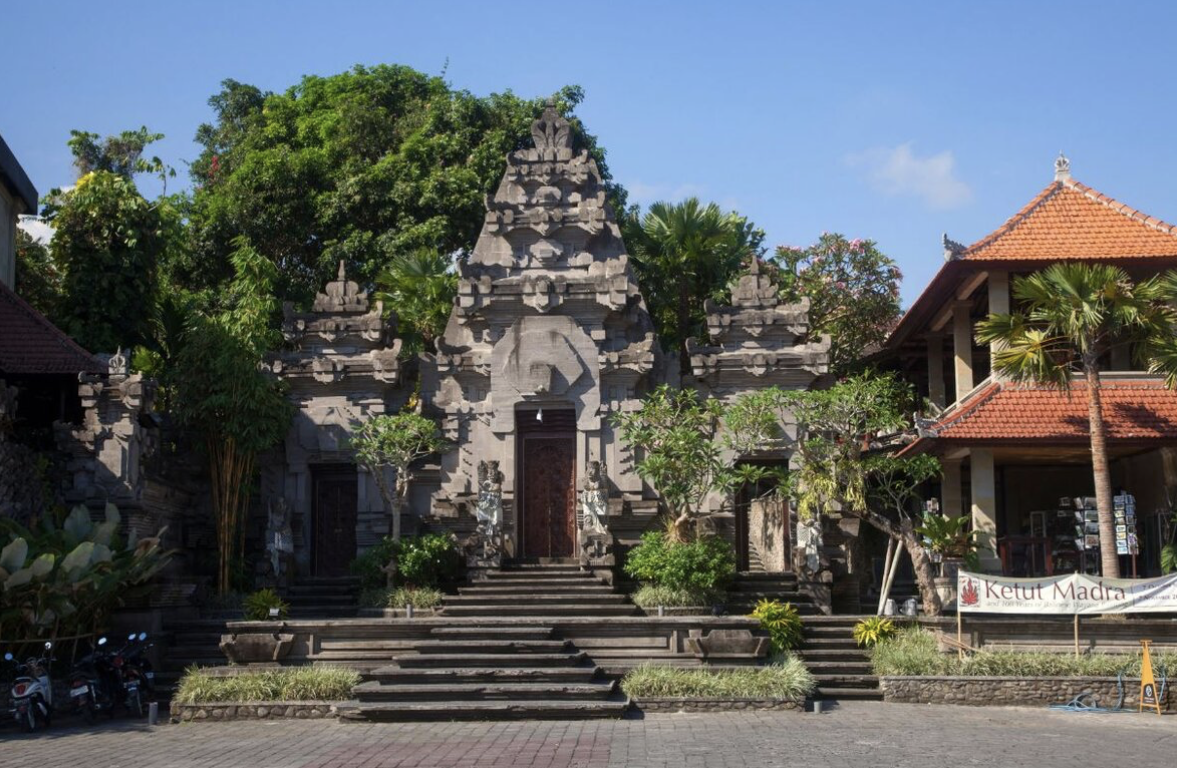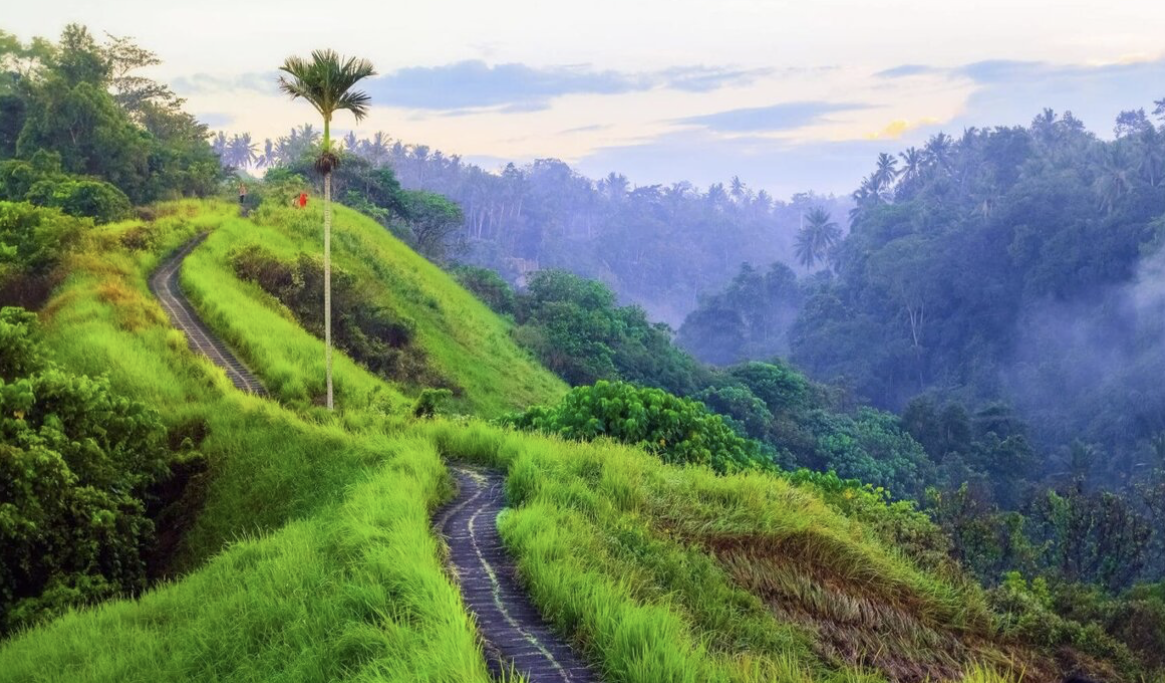Top 10 best attractions in Bali: what to see, where to go
Bali has long become synonymous with “beach vacation”, and while sitting at work, many dream of being on this island. Everyone imagines themselves on a sunbed in the shade of palm trees, sipping a cocktail and admiring the sunset over the sea. Bali is a case where expectations coincide with reality, but this Indonesian island is not only famous for its sea and beaches. It is also worth saying that upon arrival in Bali, it is best to order Bali Airport transfers from Kiwitaxi, with which you can get to your hotel in complete comfort after a long flight. It is worth adding that you will book the transfer in advance, which means that the carrier will be informed in advance when you will arrive and where to meet you. Also, at the customer's request, the car can be equipped with a child seat if you are traveling with children. One of the advantages of this service is also the ability to choose the class of car. All this makes Kiwitaxi one of the best transfer companies that provide their services in 102 countries around the world.
1. Ubud city
Mysterious jungles, snow-white beaches and crystal clear sea water are not all that Bali is famous for. To prove this, we will tell you about the city of Ubud - the cultural center of the resort island. Its history began around the 8th century, but Ubud became famous a little more than a hundred years ago, largely thanks to Walter Spies, a German from Russia who taught music, dancing and painting. Together with other talented people, he began to teach the Balinese various types of art, thanks to which the city soon earned the title of the cultural center of Bali. At the moment, there are several popular museums in the city, where works of foreign and local artists are presented. Posters in Ubud are never empty, because every week one or another exhibition is held, aimed at raising the already high level of culture, and folk songs and dances await at every corner. Of course, we will talk about the most famous museums separately.
2. Agung Rai Museum of Art
The Agung Rai Museum is only formal, because it is a huge cultural center where, in addition to exhibitions, performances, music and dance festivals, as well as other events with an often experimental format are held. Agung Rai was founded a little less than 30 years ago by the Balinese Agung Rai, who devoted most of his life to the popularization of domestic art. In view of this, the main part of the exhibition is occupied by works of local artists from different generations, which, in turn, illustrates the main stages in the development of Balinese art. It should be noted that the museum itself is a masterpiece of architecture and landscape design; in particular, the surrounding park is of great delight, where you can admire nature and hide from the heat.
3. Puri Lukisan Museum
Puri Lukisan is Bali's oldest museum, founded by the aforementioned Walter Spies and the Dutch artist Johan Rudol Bonnet. Although it would be more correct to say that they marked the beginning of the creation of his collection, since the museum opened only in 1956 after the death of Spice and Bonnet. The development of Puri Lukisan did not end there, because in subsequent years several more new halls were built, and the museum’s collection was replenished with thousands of works of art. Paintings by pioneers of Balinese painting, established classics and contemporary artists are exhibited here. Separately, it is worth noting the exhibition with wood carvings in pagan and Hindu traditions, because this craft existed on the island long before the 20th century. Many carvers have achieved such skill in this that they could easily compete with the skill of execution with ancient sculptors.
4. Monkey Forest in Ubud
Monkeys have long been considered sacred animals for the Balinese, and if they live on the territory of the temple, then they are completely inviolable. The Monkey Forest in Ubud, where three Hindu temples are located, built approximately 600-700 years ago, is considered one of these. The local forest is incredibly beautiful, so it is not at all surprising that hundreds of monkeys have chosen it as their habitat. Moreover, the macaques became so accustomed to these places that they were able to create something like a primitive system. They divided into several groups, which often quarrel with each other, as their population grows and their territory becomes smaller. At night, macaques sleep, and during the day they get food, fight, care for their young, and do other monkey things. At the same time, Balinese macaques have not been afraid of people for a long time and sometimes behave brazenly, as if taking advantage of their sacred status: they steal food, snatching it from hands or bags, and sometimes they drag everything else that, in their opinion, is of any interest. Therefore, we advise you to keep valuables deep in your pockets and not try to return the food, because the monkeys will not give up anything without a fight. However, many come here specifically to feed the macaques, and they never refuse the treat. However, remember that you shouldn’t give everything, so instead of cookies or a sandwich, it’s better to take bananas, corn, cucumbers or coconuts with you.
5. Artists' Trail in Ubud
Not far from the center of Ubud is a scenic hiking trail that runs along the Champuan mountain range. Our tourists called it the “Artists’ Path”, because the Balinese themselves don’t call this place that. However, the name is very appropriate, because everywhere you look there are picturesque views worthy of being captured on expensive canvases. The path is paved with stone slabs, and all around is only tall grass and dense jungle - just a “postcard view” of Bali. However, beauty requires sacrifice, because climbing the “Artists’ Trail” is not easy and will require some effort from you. Therefore, we recommend wearing comfortable shoes and stocking up on water, or even better, going here early in the morning to watch the sunrise in Bali - an incredibly beautiful and memorable sight.
6. Elephant Cave Goa Gajah
The Elephant Cave of Goa Gaja is one of the oldest sanctuaries in Bali, built around the 9th-11th centuries. The exact purpose of the site is unknown, but it is believed that Goa Gaja was used for spiritual meditation, with both Hindu and Buddhist elements found in the exterior and interior decoration. For centuries the sanctuary was considered lost until it was discovered during archaeological excavations in 1923, and 31 years later more fountains and bathing pools were found nearby. According to researchers, the sanctuary was named “Elephant Cave” because of the sculpture of the Hindu god Ganesha, traditionally depicted with an elephant’s head. The hallmark of Goa Gazha is the central entrance, framed by a menacing face carved in stone: similar sculptures are often found in the Elephant Cave, as they are believed to scare away evil spirits. Travelers who have visited Goa Gadja note that there is a special energy here, and the value of the sanctuary for Hindus and Buddhists is difficult to overestimate.
7. Tegalalang and Jatiluwih rice terraces
When visiting Bali, be sure to include a visit to the rice terraces in your itinerary. They are unique and interesting because they are located on hills and resemble huge stairs. Since ancient times, the Balinese have learned to make the most of the available landscape for growing rice, since there are quite a few of the usual flat fields on the island. At the same time, the rice terraces fit so well into the surrounding landscape, which creates the feeling that nature itself created them. There are many similar terraces in Bali, but you don’t have to visit every one to appreciate the beauty and picturesqueness of these places. We recommend visiting the Tegalalang and Jatiluwih rice terraces, located almost in the center of the island. Their scale is amazing, especially when you know the fact that they were built a very long time ago. There are paths and signs along the fields, so tourists simply won’t be allowed to get lost here. You can get to this attraction using the Kiwitaxi.com service, which will make your journey safe and more convenient.
8. Pacifica Museum
Pacifica, or Nusa Dua Bali, is a museum opened in 2006 by a local businessman and a collector from France. The collection widely includes ancient artifacts of peoples who lived in Asia, in particular near the Pacific coast. The exhibition is also rich in works of art by authors from different countries, including paintings by Italians, Dutch and French. An interesting feature is that some paintings and sculptures, although written by foreigners, were created here - in Bali. In total, the Pacifica Museum managed to collect over six hundred works of art of both cultural and historical value.
9. Neka Museum
The museum is named after Suteji Nek, a famous Balinese artist whose love for art began thanks to the efforts of his father Wayan Nek, a talented sculptor. Suteji's first exhibition took place in 1966 in one of the Bali hotels, and it was then that he became famous throughout Indonesia. This prompted him to study and collect art objects created by masters of his native country. A full-fledged museum opened in 1982 and has 5 buildings, one of which is dedicated to temporary exhibitions. The Neka Museum contains works in perhaps all the styles and techniques ever used by Indonesian artists. Thanks to this, you will be able to trace the entire path of development of local painting up to the present time.
10. Temple Pura Tanah Lot
Tanah Lot in Balinese means "land in the sea". This indicates that the ancient Balinese sometimes did not bother with the names of their shrines, because the temple really stands on a small coastal cliff, washed by the sea on all sides. You can get to Pura Tanah Lot through a small isthmus at low tide, since the rest of the time the rock is cut off from the island by water. The temple was founded about 500 years ago and is one of 7 temples located along the coast so that one can clearly see the neighboring one. Like other Indonesian shrines, Pura Tanah Lot is shrouded in many myths and legends, according to one of which it is guarded by an ancient giant snake, and at the base of the rock live small poisonous snakes that prevent people with evil intentions from climbing it. Pura Tanah Lot is an active temple and is open to visitors, but for foreigners the entrance fee is 3 times more expensive than for Indonesian citizens.

















